Overview of the technology of the ventilation device of the pool, depending on its size
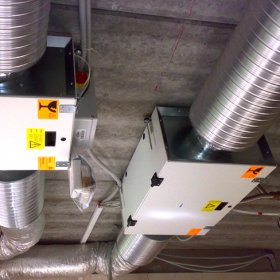
Installation of a ventilation system in a swimming pool room allows solving a number of problems that arise during the operation of such structures. Installed equipment removes excess moisture, and also provides an influx of fresh air. At the same time, a microclimate favorable for visitors is created in the room. In order for the pool ventilation to cope with all the tasks, it is necessary at the design stage to take into account the size of the room, the area of the water mirror, the temperature parameters presented to air and water, the number of visitors and other data.
Errors in the choice of equipment can lead to an increase in humidity, which will lead to condensation on the walls, windows and other surfaces of the structure. This will lead to the development of corrosion on metal structures, the beginning of rotting of wooden materials and the appearance of fungal mold. As a result of such operation, an object can be destroyed in just one season. To avoid this, it is necessary to take into account the issue of arranging ventilation when developing the project. Remember that mistakes made by unskilled specialists during installation of ventilation units can always be corrected.
Content
Use of dehumidifiers
Partially solve the problem of waterlogging in the pool using air dryers. When choosing this equipment are guided by the volume of the room. For an hour of operation, the device must pass a three-fold volume of humidified air in the room. This method of calculating the performance of drainage equipment is very approximate.
It is necessary to select dehumidifiers for pools with a specialist, since you have to take into account a number of other parameters specific to this type of objects. In addition to wall-mounted models, manufacturers produce channel dehumidifiers that can provide small amounts of fresh air. However, this equipment is not able to completely solve the problem of providing the pool with fresh air in sufficient volume. This is the main disadvantage of organizing a ventilation system using only dehumidifiers.
Installation of supply and exhaust systems
Ventilation systems designed for pools based on supply and exhaust units with the function of heat recovery are able to provide effective air exchange in the room. Elimination of the unpleasant odor inherent in rooms with a high level of humidity is carried out due to a constant mixture of fresh air. The heat recovery method allows to reduce the amount of heat loss, most of which falls on the ventilation systems of the facilities.The reduction of heat loss occurs due to the use of a heat exchanger, in which a warm stream of air leaving the house heats cold air masses, which are forcibly drawn into the room. Due to the special design of the heat exchanger mixing of oncoming flows is not allowed.
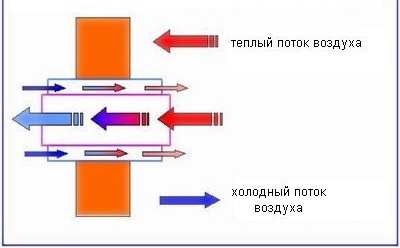
The diagram shows the principle of operation of a heat recuperator, which allows to reduce heat loss during the organization of ventilation of the pool and other rooms
Using ventilation equipment with a recovery function allows you to save up to 65% of the heat sent to the street with warm air.
The use of a ventilation system in the pool without dehumidification is effective if:
- provides five-fold or more air exchange in the room;
- the surface of the water mirror has a small area;
- not an intensive mode of operation of the facility.
This solution to the problem is attractive due to its cost effectiveness. However, the supply and exhaust system installed in the pool cannot ensure the maintenance of a comfortable level of humidity.
For reference! The optimum level of humidity in the pool in winter should be 55%, and in summer - 60%.
Combination of air handling unit and dehumidifier
Separate use of the supply and exhaust unit and the air dryer for the pool does not solve the problem of arranging full ventilation of a room with a high level of humidity. If you combine these types of climatic equipment, you can get the desired result. The ventilation unit can be supplemented with a wall or cassette dryer. The type of equipment is selected depending on the size of the pool area.
- Forced ventilation, consisting of a supply and exhaust unit and a wall air dryer, is recommended for installation in pools with a small water mirror not exceeding 50 sq. meters. This arrangement option is applicable in the pools located in country cottages and private houses, hotels, educational institutions.
- If the area of the water mirror exceeds 50 sq. meters, the ventilation unit is supplemented by a channel dehumidifier. The wiring of the ventilation ducts is carried out from Climaver ducts.
The efficiency of gas exchange in the pool depends on the correct distribution of air flows. According to a typical scheme, fresh air is supplied from the lower zone of the room. The exhaust air is removed from the upper zone of the room.
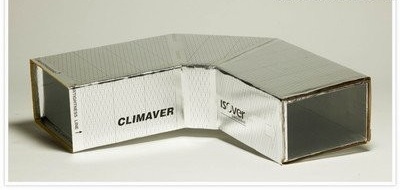
Rectangular ducts are assembled from Climaver boards, suitable for mounting ventilation systems in rooms with high humidity

Duct air dryer can reduce the humidity in the pool to acceptable levels. It is recommended to install together with the supply and exhaust systems
Climatic complex for large pools
In large swimming pools with a water mirror area exceeding 100 square meters. meters, use powerful climate systems. A powerful installation at any time of the year supports the microclimate in a huge room according to the specified parameters. Climatic complexes are called multifunctional ventilation units that produce drainage, filtration and air heating. At the moment, this equipment is considered the most modern and highly efficient.
Climatic complexes are issued in the form of modular units, completely ready for connection and operation in rooms with a high level of humidity. The equipment is designed to process air saturated with chlorine compounds.
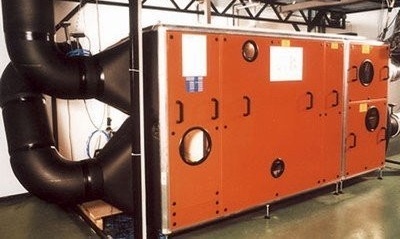
Climatic complex for automatic air treatment in a swimming pool. The unit is able to work in several modes, depending on the season and time of day.
In one case there are separate technical units designed to perform specific functions:
- plate and glycol recuperators;
- Air Dryer;
- air filters;
- heater;
- exhaust and supply fans;
- air valves;
- Control block.
Some models include one plate heat exchanger and a heat pump. At the request of consumers, the manufacturer can make the necessary changes in the configuration of the climate complex.
The installation of one climate complex replaces all the equipment necessary for the life support of the facility: heating appliances, air dryers (wall or duct), supply and exhaust systems. All the functions performed by these devices are concentrated in one climate system. At the same time, the equipment operates in automatic mode, reading the parameters of the air medium from the sensors and bringing them back to normal by turning on one or another technical unit. For the installation of the climate complex, you must have a separate room located next to the pool. The basement of the building can also be used as such a room.
Many companies are engaged in the production of air conditioning systems intended for installation in private, public, therapeutic and sports pools. Among the well-known brands are Frapol (Poland-Austria), Polar Bear (Sweden), Menerga (Germany), Remak (Czech Republic) and Asys (Ukraine).
The cost of high-tech equipment is quite high. Depending on the capacity and configuration of the complex, its price can reach several million. But it is possible to save on installation work and the cost of maintaining the facility during operation. Acquired equipment can pay off only after 10-15 years.
From the above methods for arranging pool ventilation, each consumer can choose the appropriate option for cost and technical parameters. The help of specialists in the selection of ventilation equipment for the pool will not be superfluous.
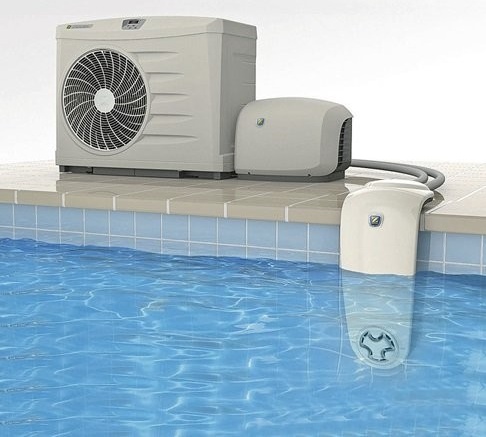

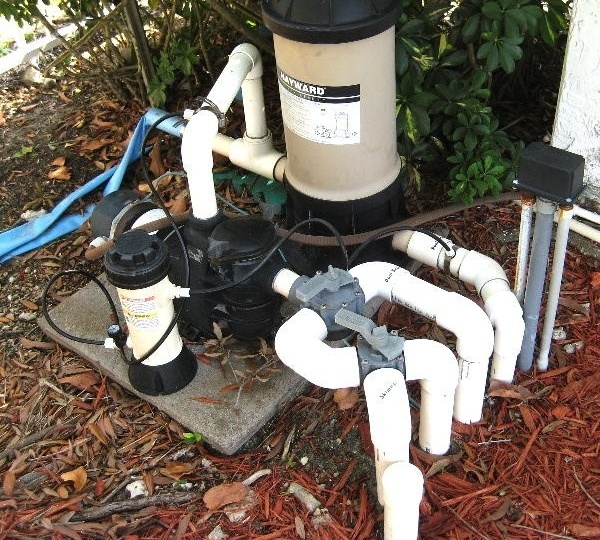
2 comments